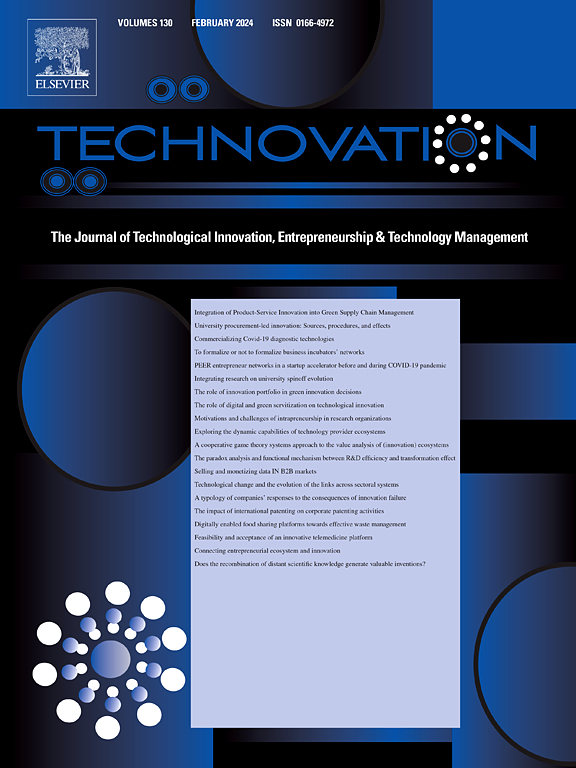Firm’s openness and innovation radicalness within R&D networks: Reconciling the openness paradox through the network pluralism view
IF 11.1
1区 管理学
Q1 ENGINEERING, INDUSTRIAL
引用次数: 0
Abstract
Strategic openness in R&D networks is crucial for high-tech enterprises aiming to enhance innovation radicalness. Firms often struggle to understand the impact of openness in different technological fields and how to navigate the associated tension between sharing and protecting knowledge. Drawing upon the network pluralism approach and knowledge-based view, we separate a firm’s R&D network into three types based on technological fields: core technological R&D network (CN), related and distant non-core technological R&D network (related NN and distant NN). We argue that a focal firm’s openness within these networks affects innovation radicalness in distinct ways. Fixed-effects regression analysis of patent data from the new energy vehicle industry (2001–2021) demonstrates that openness in CN and related NN positively influence the focal firm’s innovation radicalness, while openness in distant NN negatively affects outcomes. Furthermore, the openness in related NN and distant NN plays distinct moderating roles in the relationship between openness in CN on innovation radicalness. This study reveals that the impact of openness and the associated tension depend on the technological fields, and highlights that the interplay between parallel networks can help mitigate this tension. In sum, our research contributes to the current debate on the openness paradox in R&D networks, providing firms with a new perspective to better manage the tension between sharing and protecting knowledge in practice.
求助全文
约1分钟内获得全文
求助全文
来源期刊

Technovation
管理科学-工程:工业
CiteScore
15.10
自引率
11.20%
发文量
208
审稿时长
91 days
期刊介绍:
The interdisciplinary journal Technovation covers various aspects of technological innovation, exploring processes, products, and social impacts. It examines innovation in both process and product realms, including social innovations like regulatory frameworks and non-economic benefits. Topics range from emerging trends and capital for development to managing technology-intensive ventures and innovation in organizations of different sizes. It also discusses organizational structures, investment strategies for science and technology enterprises, and the roles of technological innovators. Additionally, it addresses technology transfer between developing countries and innovation across enterprise, political, and economic systems.
 求助内容:
求助内容: 应助结果提醒方式:
应助结果提醒方式:


